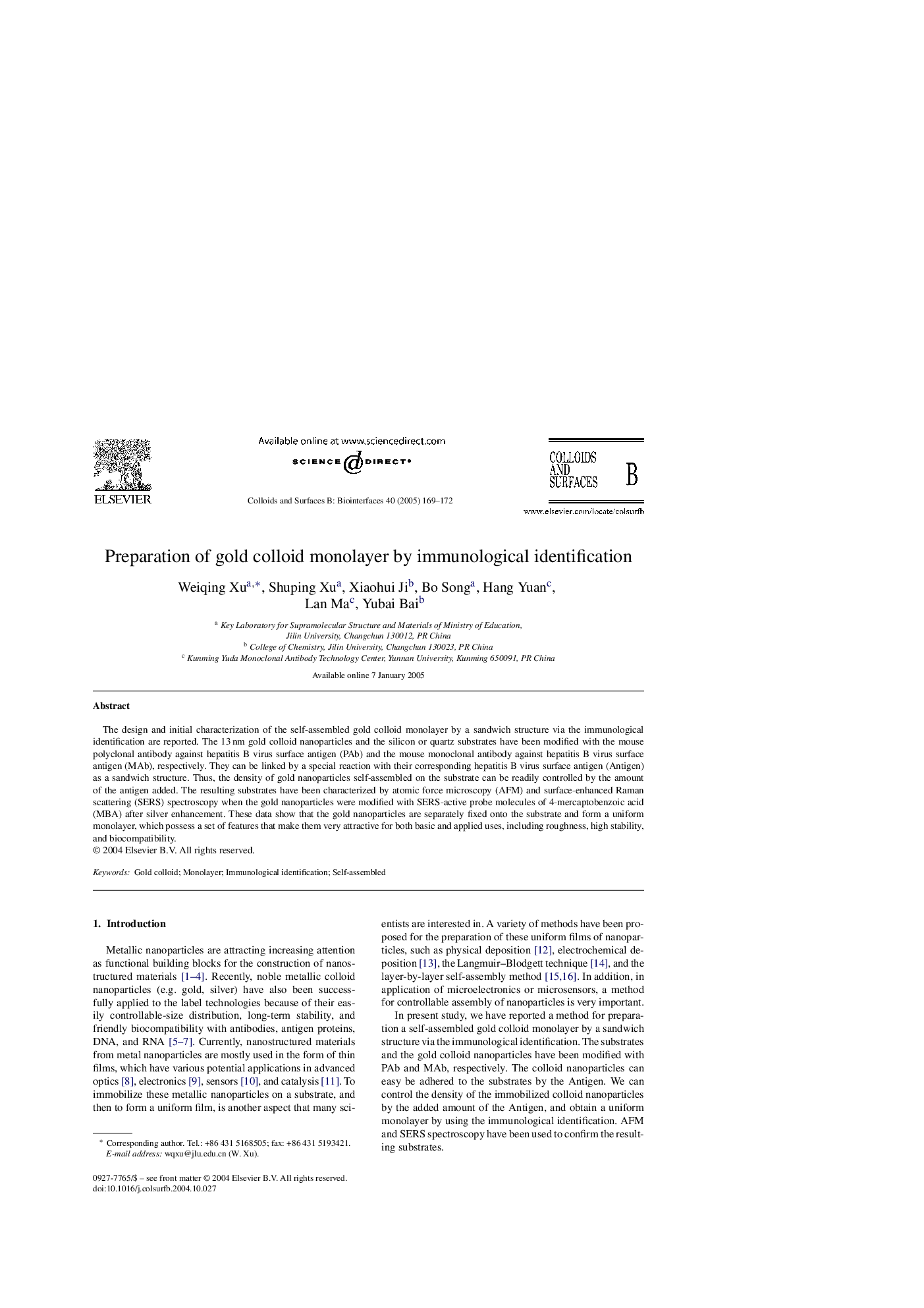| Article ID | Journal | Published Year | Pages | File Type |
|---|---|---|---|---|
| 9678417 | Colloids and Surfaces B: Biointerfaces | 2005 | 4 Pages |
Abstract
The design and initial characterization of the self-assembled gold colloid monolayer by a sandwich structure via the immunological identification are reported. The 13Â nm gold colloid nanoparticles and the silicon or quartz substrates have been modified with the mouse polyclonal antibody against hepatitis B virus surface antigen (PAb) and the mouse monoclonal antibody against hepatitis B virus surface antigen (MAb), respectively. They can be linked by a special reaction with their corresponding hepatitis B virus surface antigen (Antigen) as a sandwich structure. Thus, the density of gold nanoparticles self-assembled on the substrate can be readily controlled by the amount of the antigen added. The resulting substrates have been characterized by atomic force microscopy (AFM) and surface-enhanced Raman scattering (SERS) spectroscopy when the gold nanoparticles were modified with SERS-active probe molecules of 4-mercaptobenzoic acid (MBA) after silver enhancement. These data show that the gold nanoparticles are separately fixed onto the substrate and form a uniform monolayer, which possess a set of features that make them very attractive for both basic and applied uses, including roughness, high stability, and biocompatibility.
Keywords
Related Topics
Physical Sciences and Engineering
Chemical Engineering
Colloid and Surface Chemistry
Authors
Weiqing Xu, Shuping Xu, Xiaohui Ji, Bo Song, Hang Yuan, Lan Ma, Yubai Bai,
